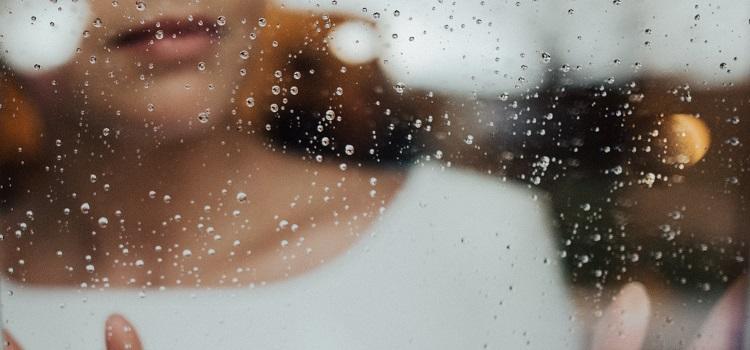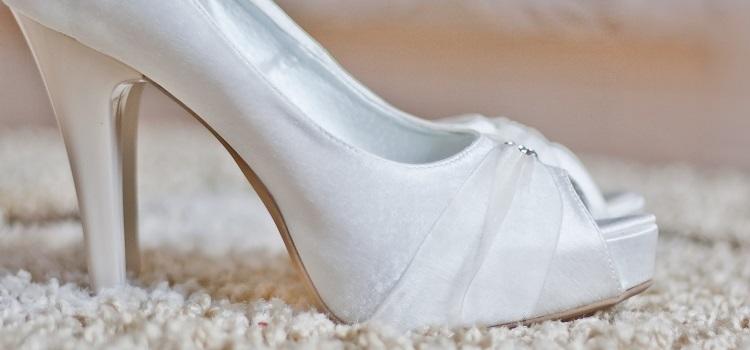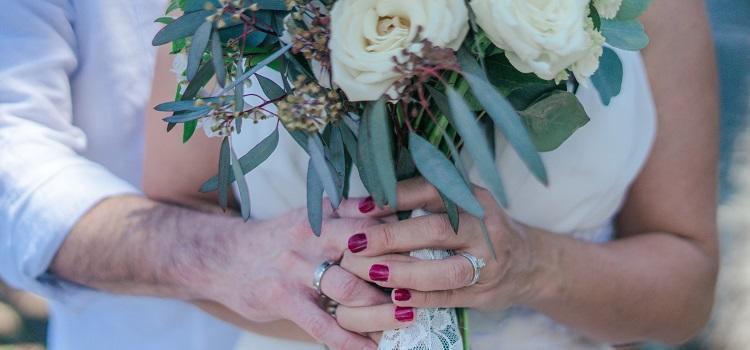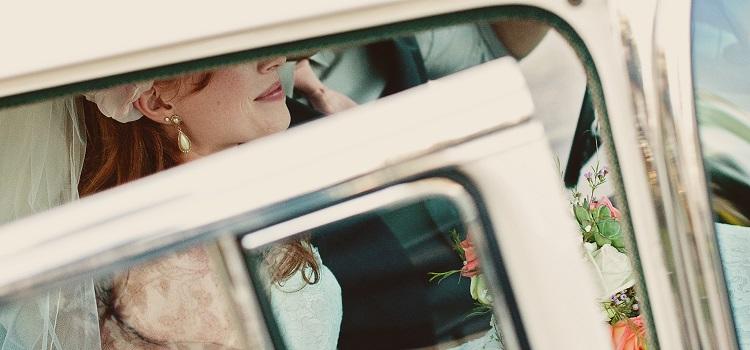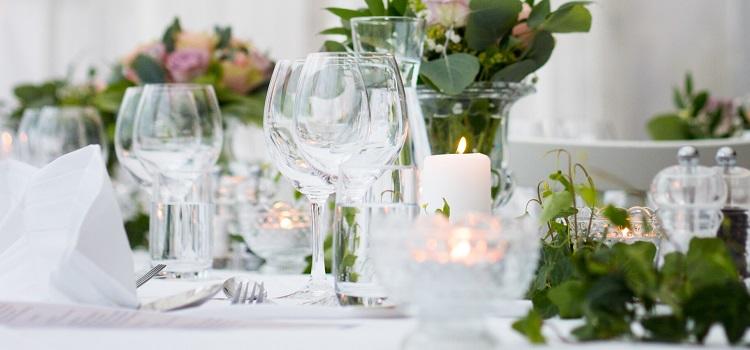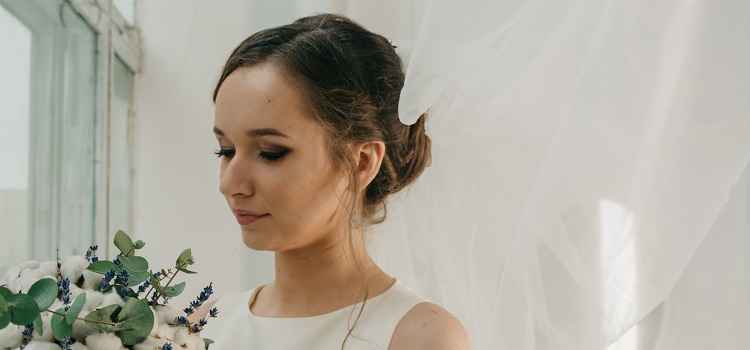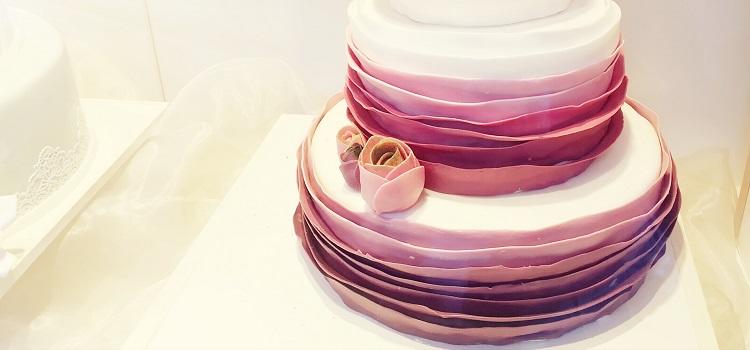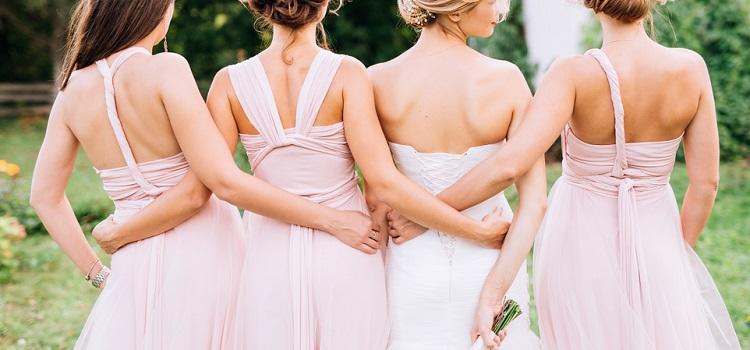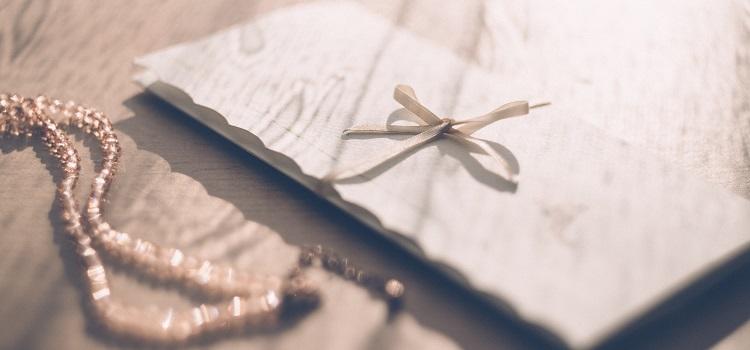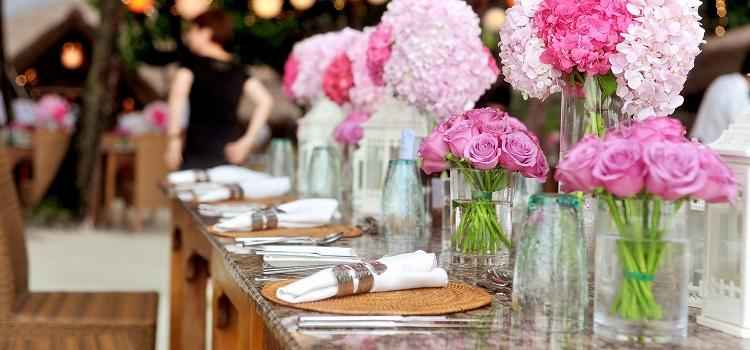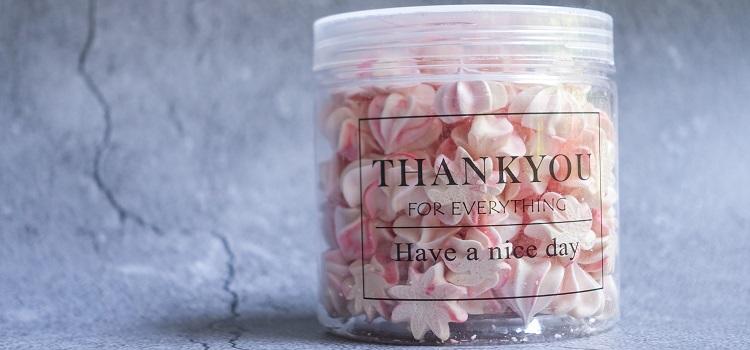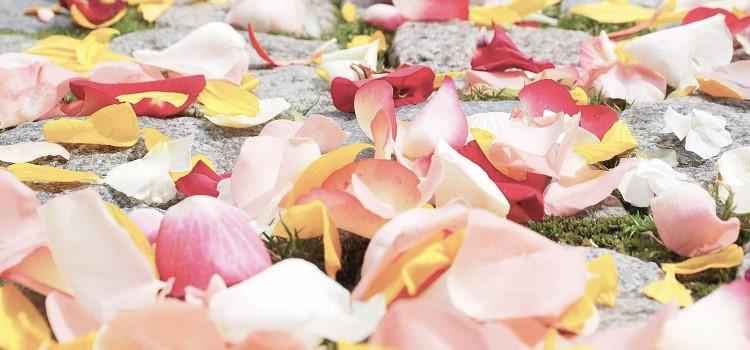Prosecco & Petals
Wedding planning guide
How to choose a wedding veil
Wearing a wedding veil is a quintessential finishing touch for most brides. The below article gives a guide to everything you need to know about veils so you can choose the right one for you.
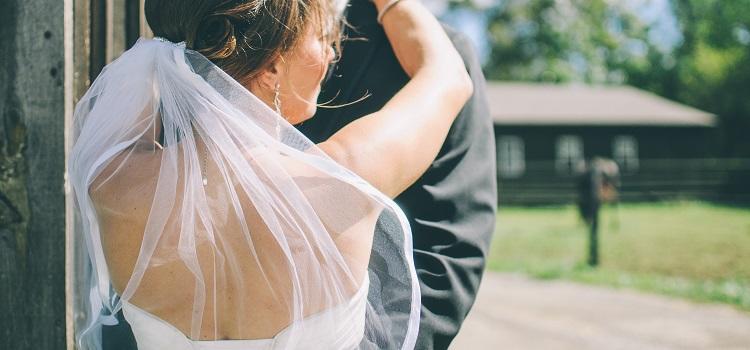
Do you have to wear a veil at your wedding?
The simple answer is no. The decision to wear a wedding veil, or not, should be the bride's choice based on their unique style. Whatever your initial preference, it is worth trying on a veil when wedding dress shopping and getting a friend to take pictures. Many women surprisingly find that a veil can transform a beautiful white gown into a wedding dress.
How much should a wedding veil cost?
Veils will vary in price due to the fabric, detailing and length chosen. Prices below are based on a standard illusion veil:
- For a shoulder to fingertip length veil, it is realistic to expect to pay between £60 and £90
- For a chapel length veil and one with more intricate detailing, expect to pay between £90 and £110
- Lastly, for a sweeping cathedral or Royal length veil, expect to pay anywhere from £100 to £170
Related articles: wedding dress styles dress colours and fabrics
bridal shoes
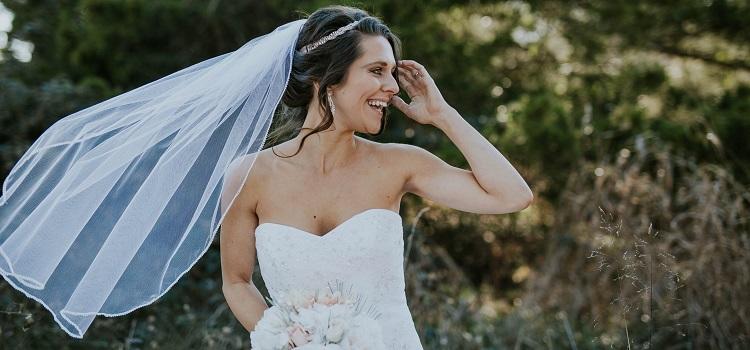
How to pick the right length veil
There is an enormous amount of choice when it comes to veil lengths: These range through from stiff facial 'birdcage' varieties to sweeping long 'cathedral' veils. When deciding what length wedding veil is best for you, it is important to consider what will enhance your bridal look and suit your wedding style.
The right length veil should complement the flow of your dress; neatly finishing where there is no intricate detailing. The veil should also enhance your hairstyle and neckline. Lastly, it is also worthwhile considering if your venue and aisle will accommodate a long veil or if a shorter version will be much easier to manage.
What length wedding veil is best?
Elbow-length veils: These are light-weight and work nicely with an updo hairstyle or a dress that has a lot of detail around the waistline and skirt which you do not want to mask.
Fingertip length veils: These light and playful length veils are perfect if you are wearing your hair down or have a defined silhouette that you want to show off.
Chapel (floor length) veils: These traditional and romantic style veils can add a soft-focus layer to a plain bodice or a traditional aline wedding dress. Chapel length veils will give a beautiful flowing photogenic look.
Cathedral (will have a small train) veils: These extravagant length veils will give a show-stopping, regal bridal look. Cathedral veils are expensive and should only be considered if you have a dress and venue that will match this look.
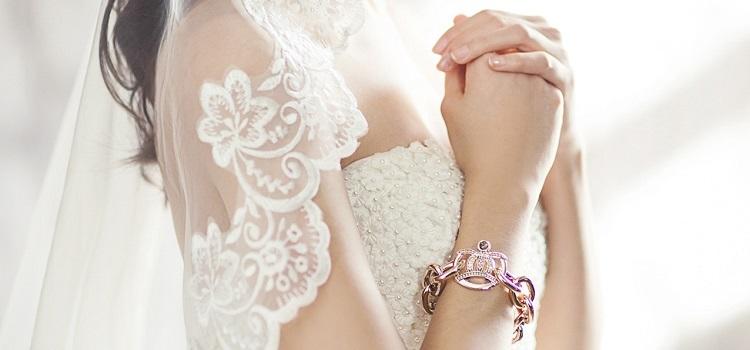
What wedding veil fabrics to go for
Veils come in a variety of fabrics; three of the most versatile, widely available and weightless materials are outlined below. It is recommended to opt for a fabric which will most closely complement your dress:
Illusion (Nylon): A very soft, translucent, fine-weave fabric called tulle. Tulle is perfect for flowing, longer veils that float in pictures: This is the most popular and abundant veil style.
Glitter illusion (Nylon): This material is very much like the standard illusion but has a slight shimmer giving it a more eye-catching look. The texture is slightly stiffer, which works with simple satin wedding dresses or for those wanting a fairytale look.
Organza (Polyester): A very glossy and stiffer fabric, which makes it great in windy or wet weather when your veil will need to keep its shape. An organza veil is best for shorter veils that require a more defined shape.
Related articles: wedding dress styles dress colours and fabrics
bridal shoes
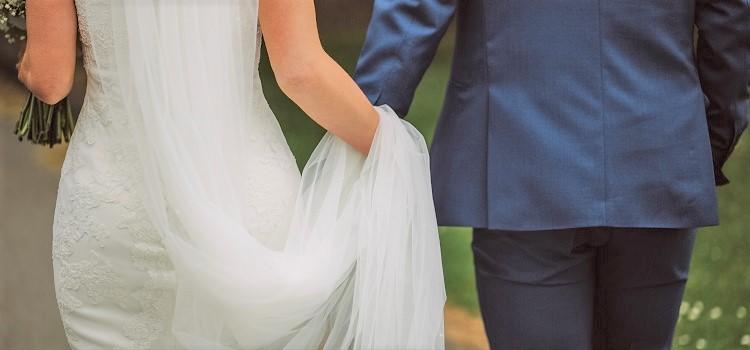
Wedding veils: What colour to pick
Your wedding veil colour should match your wedding dress. Where possible, select a white veil if you are wearing a stark, white dress and an ivory colour for any other shade of dress.
Wedding veils: Should I have an embellished or plain veil?
Before going for a more decorative, striking veil option, it is worth considering if the additional expense on this item is worthwhile. Veils are often only worn for ceremonies and formal pictures. If an extra spend here will limit the budget on other aspects, a simple and elegant style is recommended.
Wedding veils: Should I have one tier or two
Double tier wedding veils are perfect for brides that wish to follow tradition or want to have a veil with more volume around their head/hair. Single tier wedding veils are perfect for brides wanting a thin, delicate veil that will drape down their back and not detract from an intricate hairstyle.
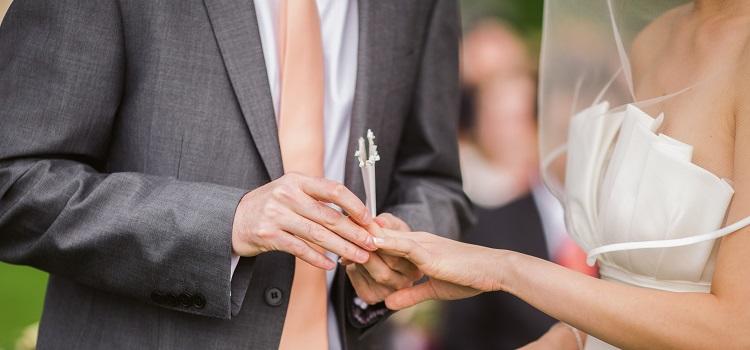
Where to buy wedding veils on the highstreet
The easiest way to find the right wedding veil is to source one through your bridal shop or another specialist boutique: This means that you can try on the veil with your dress and compare different lengths to see what works best.
If you are on a tight budget, it is worth trying on in-store and making a note of your favourite fabric, length, and style, then looking online for more competitive prices. Other larger retailers that stock veils include bridal sections in Debenhams and David’s Bridal. Lower cost bridal stores can also be a good place to get a bargain such as Wed2be. It is also worth checking with your hairdresser in case they know of any suppliers they would recommend.
Where to buy wedding veils online
Before buying online, it is wise to understand your preferences by trying on veils and then searching through marketplaces where product reviews have to be verified, such as 'Not on the Highstreet' or 'Etsy'. If ordering from abroad, make sure that the shipping cost is explicit and that enough time is given for delivery.
Online bridal veil retailers include:
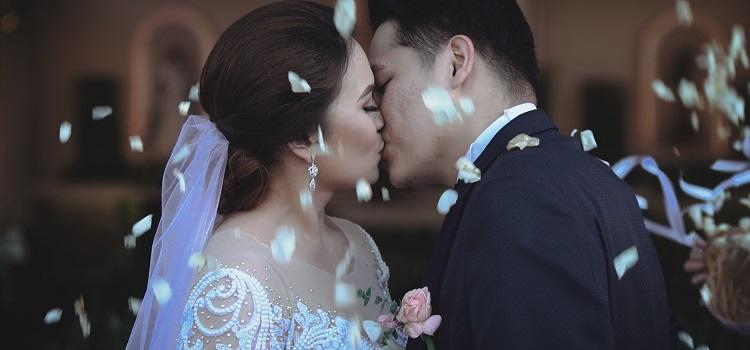
Low-cost wedding veil options
Veils can be surprisingly expensive and, as a single wear item, this cost can put some brides off wearing a veil when they would actually like to. If you are short on funds, it can be worth asking a female family member or close friend if you can borrow theirs for the day. Alternatively, it is worth shopping around for second-hand veils, which are a fraction of the price. Shop online at 'Sell my wedding' and 'Preloved' for bargains from other brides.
How do you wear a veil and when can you take it off
Most wedding veils are secured to the bride's head by a comb that grips into the hair, or a headband. To ensure that your veil stays in place, it is recommended to take it to your wedding hair trial, so your hairdresser can factor this into your finished hairstyle.
The easiest options are those that are on a small comb as these can effortlessly be taken out after the ceremony and formal photos without affecting your hairstyle.
Perfect wedding veil photograph ideas
If investing in a veil, it is crucial to make sure that this beautiful and unique bridal accessory is fully captured in all of its beauty in photographs. One of the best ways to get inspiration is by looking a veil shots on Pinterest, your venue's website and by looking at artistic pictures on websites such as 'Pexels', 'Unsplash' and 'Getty images'.
Popular Articles
